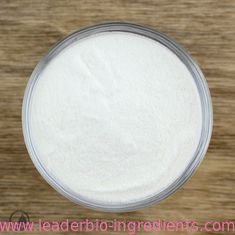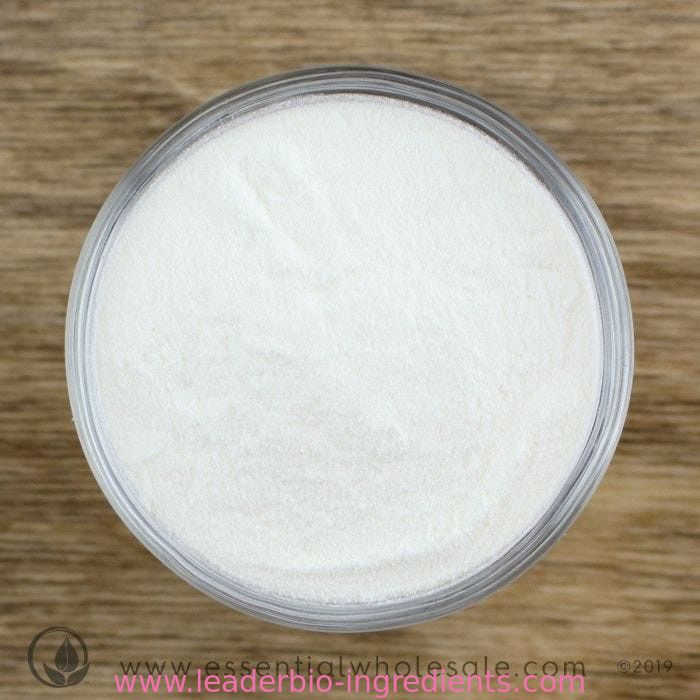| The ideal whitening agent of whitening cosmetics |
Arbutin is an ideal whitening agent of whitening cosmetics. It is also called the hydroquinone glucoside. There are two kinds of optical isomers, namely α and ß. The ß isomer has biological activity. At room temperature, it is white with pale yellow powder. It is soluble in water, methanol, ethanol, propylene glycol and glycerin aqueous solution, and it has no precipitation after dissolved. It is insoluble in chloroform, r and petroleum r, etc. Arbutin is always added in a lot of whitening skin care products. Arbutin is named for that it was founded in ericaceae plants of the genus bearberry leaves. Subsequently, it is also founded in the leaves of ericaceae vaccinium bilberry, rosaceae pyrus sand pear (european pear, small yamanashi), saxifragaceae saxifrage and other plants. It is used as drug and cosmetic additives after extracted.
Arbutin can whiten skin and medicate freckle effectively. It can gradually reduce and eliminate skin freckles, melasma, hyperpigmentation, acne and age spots. It has higher security and no irritating, allergenic and other side effects. It has good compatibility with cosmetics components and ultraviolet irradiation stability. But arbutin is easily hydrolyzed, and it should be used under conditions of PH 5-7. In order to stabilize the performance, it is typically added an appropriate amount of antioxidants such as sodium bisulfate and vitamin E. Then it can get better effect of whitening, freckle, moisturizer, soft, wrinkle removal, anti-inflammatory. Arbutin can be used to eliminate swelling, promote wound healing without leaving scars. Besides, it also can inhibit the generation of dandruff. |
| Ursolic acid and α- arbutin |
Ursolic acid is a kind of triterpene compounds that exists in the natural plant. It has many kinds of biological effects, like calm, anti-inflammatory, antibacterial, anti-diabetic, anti-ulcer and hypoglycaemic. In recent years, it is found that ursolic acid has the effect on resistance to get and promote cancer, and induction to F9 teratoma cell differentiation and anti-angiogenesis. It is likely to be low toxic and efficient new anti-cancer drugs. In addition, ursolic acid has obvious antioxidant function, so it is widely used as pharmaceutical and cosmetic ingredients.
α-Arbutin can repair damaged skin that caused by ultraviolet radiation and regain transparency of skin. It is not easy to be decomposed by the β-glycosidase enzymes on the surface of the skin. Its effect is about 10 times of β-arbutin. It can stay for a long time in every corner of the skin, and protect skin from harm. Melanin is the reason for the formation of skin dull. α-Arbutin can rapidly permeate into deep skin, and inhibit the activity of tyrosinase that exists in the depths of the cuticle of chromoplast. Then it forms a dual effect on the surface of the skin, and inhibits the generation of melanin. |
| Is it suitable for using during the day? |
Arbutin can reduce the formation of melanin through inhibiting the activity of the enzyme tyrosinase, which can generate melanin. The action principle is similar to whitening drugs hydroquinone. But hydroquinone has side effects and need so many precautions. Hydroquinone must be used below the doctor's guidance and monitoring. But there is glucose molecule in the structure of arbutin, which is not in hydroquinone. So its irritation is low. It is free to add arbutin to skin care products, and its concentration limit can be up to 7%. Arbutin reactive molecules can penetrate base layer to lighten spots deeply. It has strong therapeutic effect on hyperpigmentation left over by chloasma, black spot, sun spot, drug allergy. But if its concentration is low, then the effect of persistence will be weakened. So, 5% is the safest and most efficient concentration to lighten spot. When its concentration is 5%, its effect is faster than vitamin C, and more persistent and stable. More important, it won't produce irritating effect on the skin. Arbutin is absorbed by the skin and reduced to hydroquinone, which raises some doubts about the safety of arbutin. They think that arbutin may have a chance to produce side effects similar to hydroquinone. The most commonly heard says that "cosmetics contains arbutin cannot be used during the day, otherwise whitening fails, but more black". In fact, do not worry about that. Tests show that only the concentration of arbutin is more than 7% that it may be photosensitive. So 7% is a safety critical point. The concentration of ingredients added in skin care products has specific provision. The highest concentration is 7%. In this concentration range, arbutin is not enough to produce light sensitivity. But it does not have to be used away from light. When arbutin is absorbed by the skin and deposed by light, it will be reduced to hydroquinone and produce whitening effect. The concentration of hydroquinone in arbutin skin care products is lower than 20 PPM (that is twenty millionths). Hydroquinone won't cause side effects, like skin dark, within the limits of such a low concentration. If just because the skin care products contain arbutin so that we are afraid to use them during the day. That doesn't need unless that the skin care products containing arbutin also are added other maintenance components which need to be away from light. In a word, choose reliable brand of skin care products. Then regardless of what is painted, good sunscreen is necessary during the day. |
| Uses |
Diuretic and anti-infective drugs of urinary system. Color photographic developing stabilizer. Whitening, anti-freckle, hair care in cosmetics. |
| Chemical Properties |
Crystalline powder |
| Uses |
tyrosinase inhibitor, depigmentor, antitussive |
| Uses |
Antibacterial;Tyrosinase inhibitor |
| Uses |
Arbutin is a glycosylated hydroquinone extracted from bearberry plant. Arbutin is a known inhibitor of tyrosinase, which in turn prevents the formation of melanin. Arbutin is often used as a skin-ligh tening agent in cosmetic products. |
| Uses |
veterinary drug |
| Uses |
arbutin is used primarily for its anti-oxidant and bleaching properties. Arbutin is the active constituent of bearberry, and found in other plant sources, including wheat. It acts as a tyrosinase inhibitor by converting to hydroquinone, and thus can prevent melanin formation. |
| Definition |
ChEBI: A monosaccharide derivative that is hydroquinone attached to a beta-D-glucopyranosyl residue at position 4 via a glycosidic linkage. |

